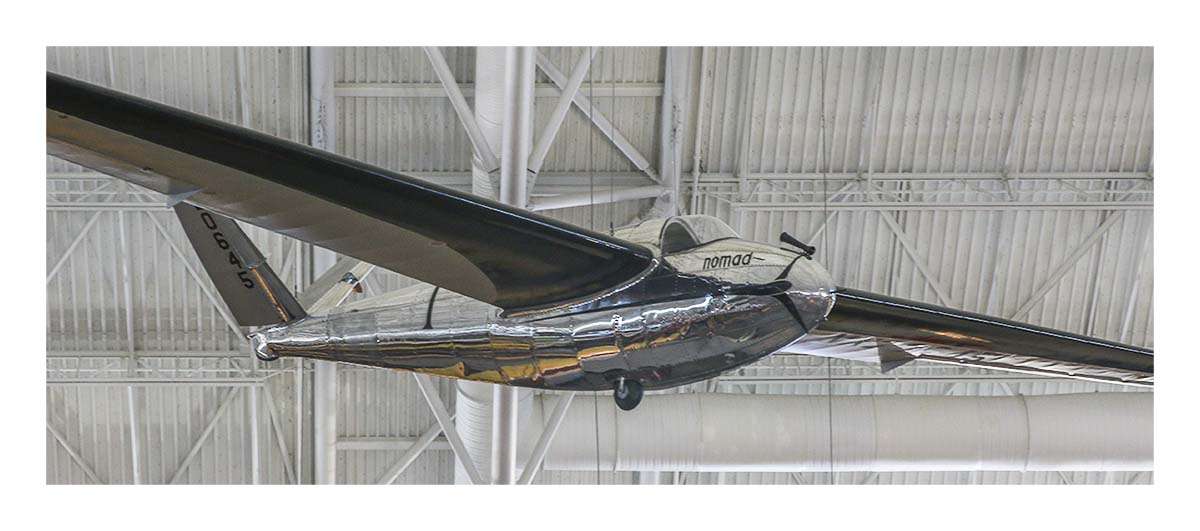
Stanley Nomad Sailplane. Building but having no experience flying sailplanes, Stanley flew the craft ro the 1938 National Soaring Contest in Emira, returning in 1939 scoring a new American altitude record and a day latger broke the record again. As a test pilot for Bell Aircraft Corporation, he made the first flight in America's first jet aircraft, the Bell XP-59A serial #42-108784.
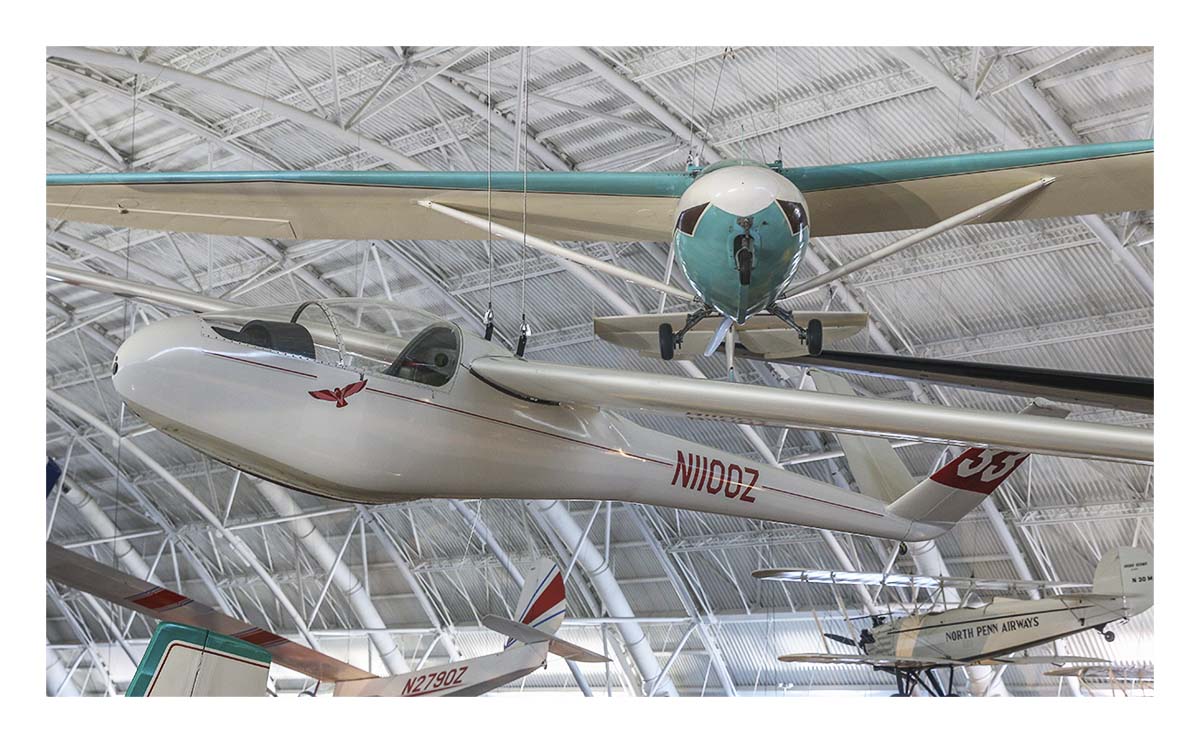
A Sisu 1A U.S.-built competition sailplane.
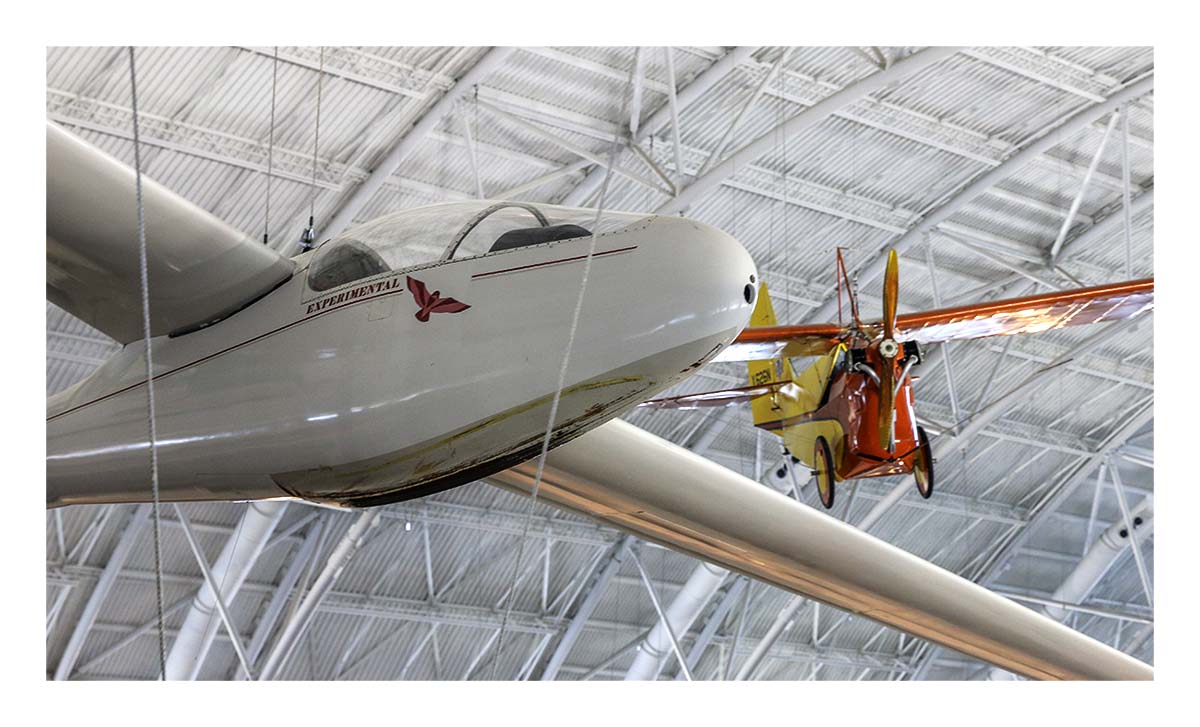
A Sisu 1A U.S.-built competition sailplane. The Aeronca C-2 Collegian NX626N (N626N) 1 is in the rear.
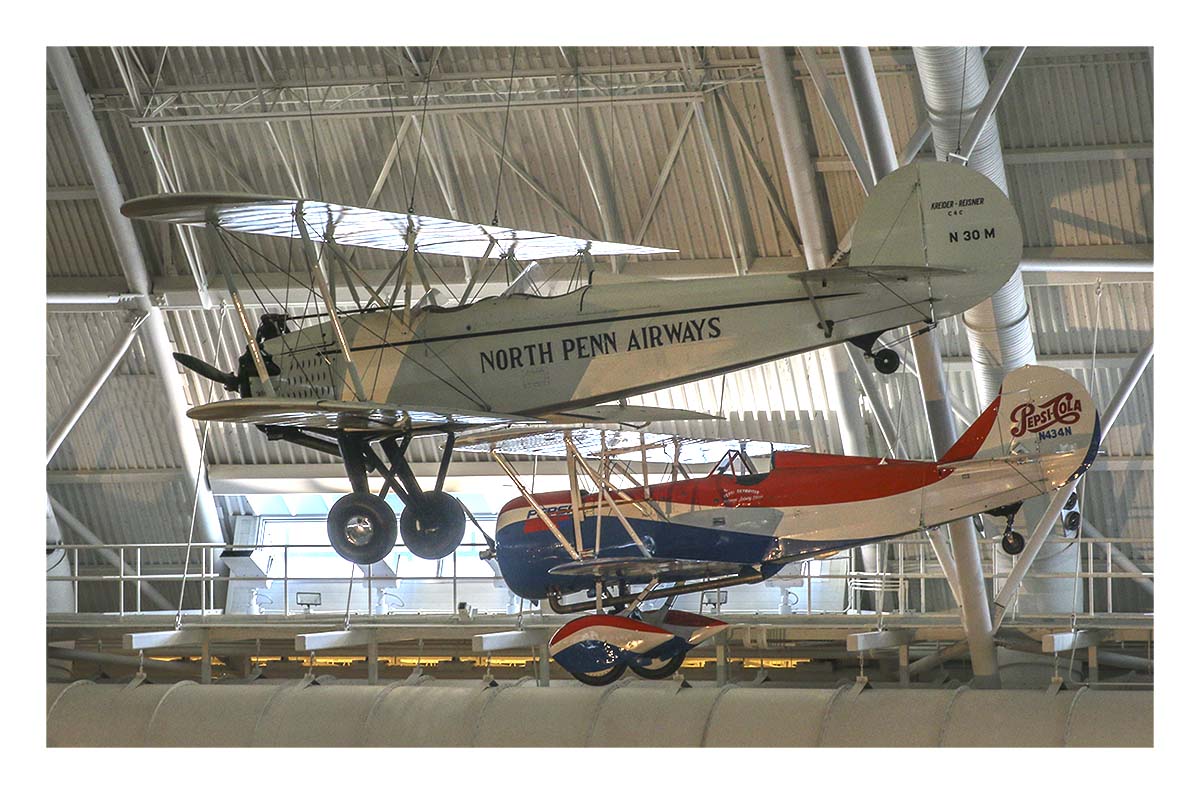
Out front is the Kreider-Reisner C-4C Challenger, while a Travel Air 4D flies in the rear.
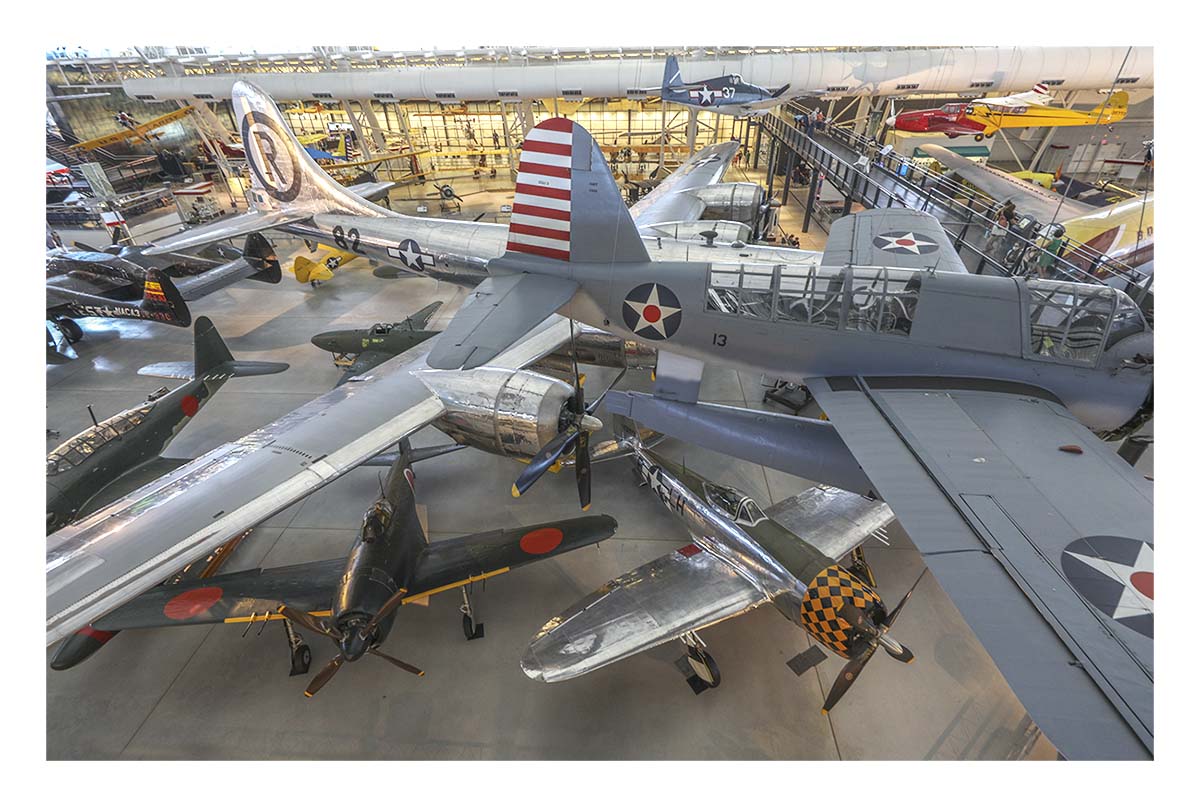
Popourri of World War II air power: Interestingly a Japanese Mitsubishi A6M5 Zero flighter sits with its nemeses, the huge B-29 bomber, P-47 Thunderbolt and Vought OS2U-3 Kingfisher (gray colored machine). The Chance Vought OS2U-3 Kingfisher was the U.S. Navy's catapult-launched floatplane and primary scout-based observation aircraft.
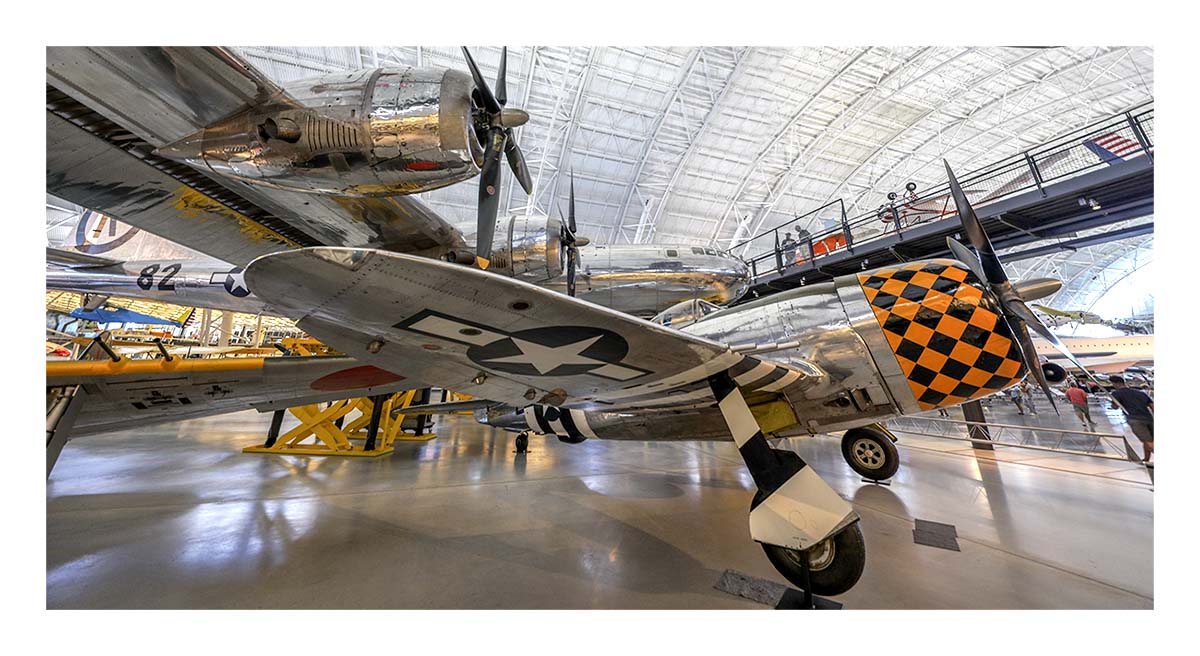
A Republic P-47 Thunderbolt sits safely under the "Enola Gay" Boeing B-29 Superfortress wing. The "Enola Gay" dropped the atomic bomb on Hiroshirma. The plane was named for pilot Lieutenant Colonel Paul Warfield Tibbets, Jr.'s mother, Enola Gay Tibbets.
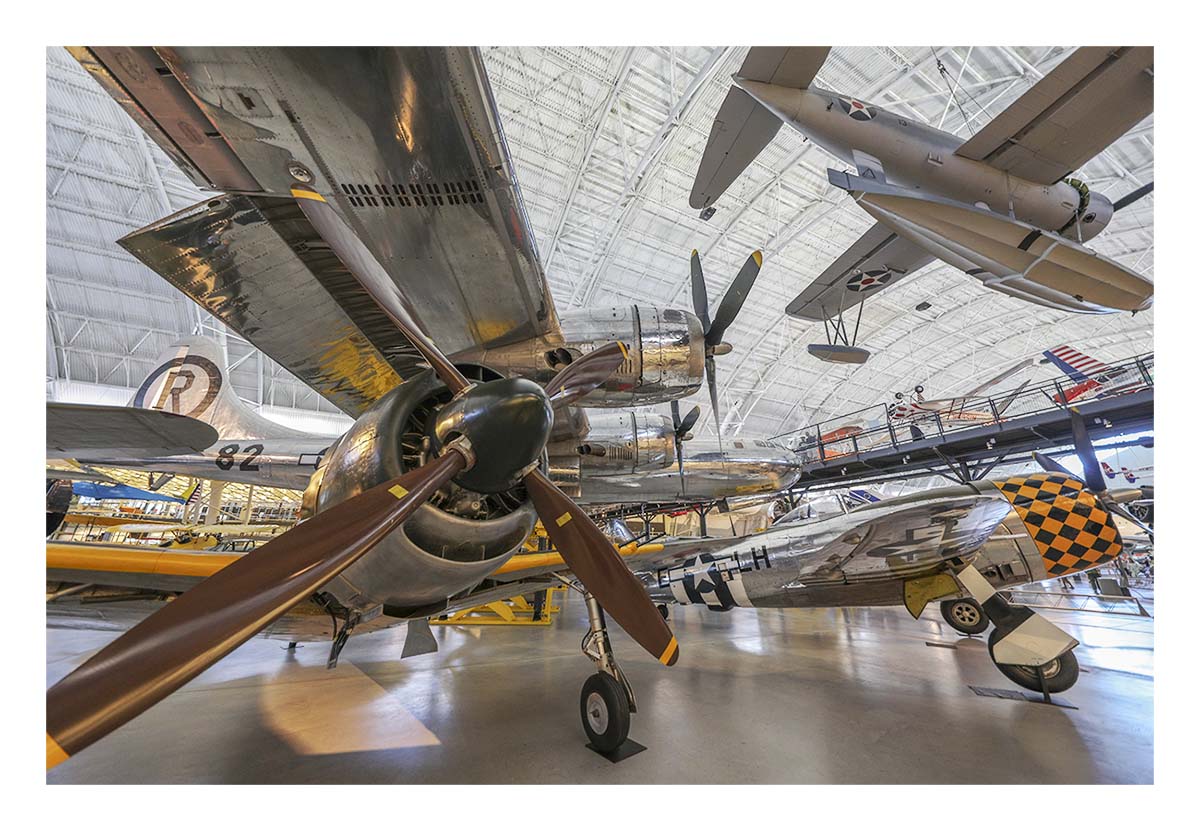
Props, props, props!
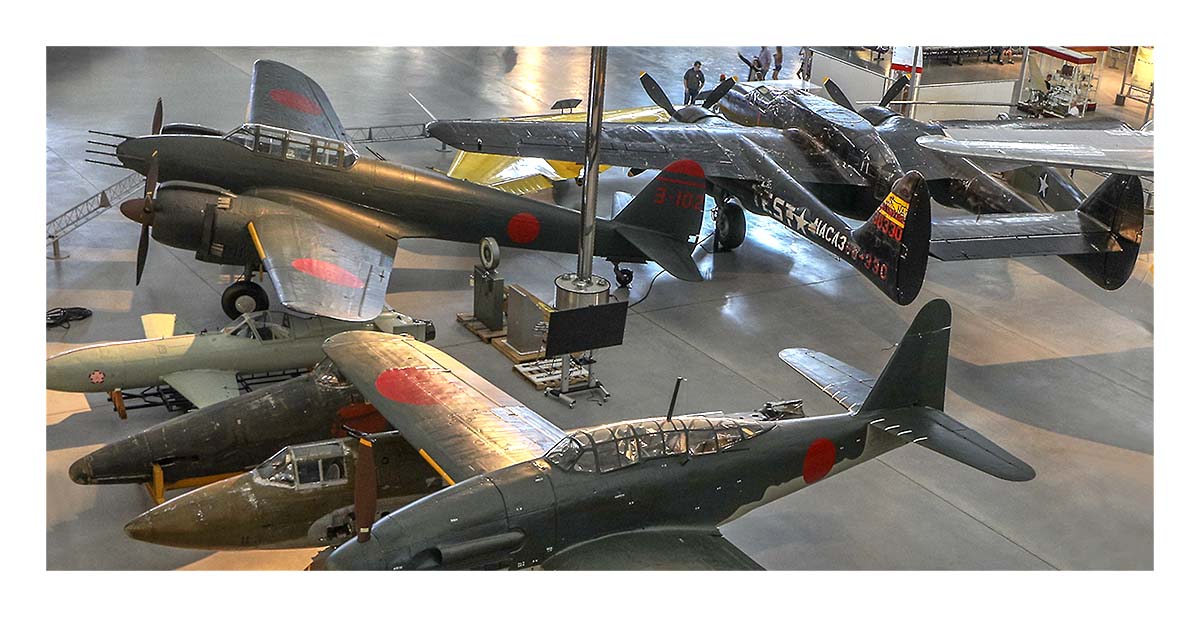
Foreground is a Japanese Aichi M6A submarine-launched attack floatplane, while a Japanese Nakajima J1N1-S Gekko (Moonlight) IRYING is on the back left and U.S. Northrop P-61 Black Widow back right. The Black Widow is the first U.S. aircraft designed as a night and bad weather attack airplane. The light color craft under the J1N1-S wing is the Yokosuka MXY-7 Ohka purpose-built rocket-powered human-guided attack aitcraft, while the very dark-colored fuselage sitting next to it is the Kyushu J7W Shinden.
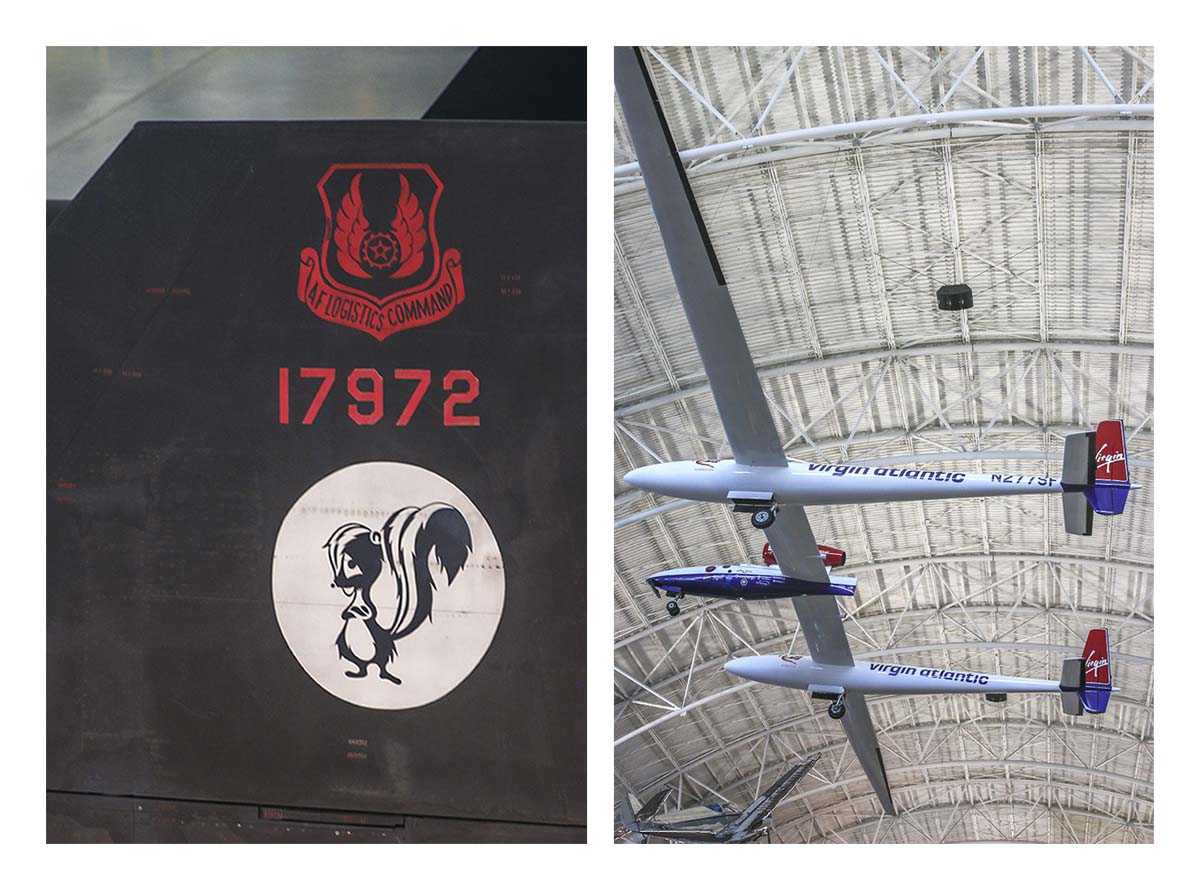
On the left is the SR-71A #61-17972 (17972) tail and the Virgin Atlantic GlobalFlyer on the right. Designed by Burt Rutan, Steve Fossett first flew a solo nonstop airplane flight around the world in the GlobalFlyer setting a new world's record for the fastest non-stop non-refueled circumnavigation.
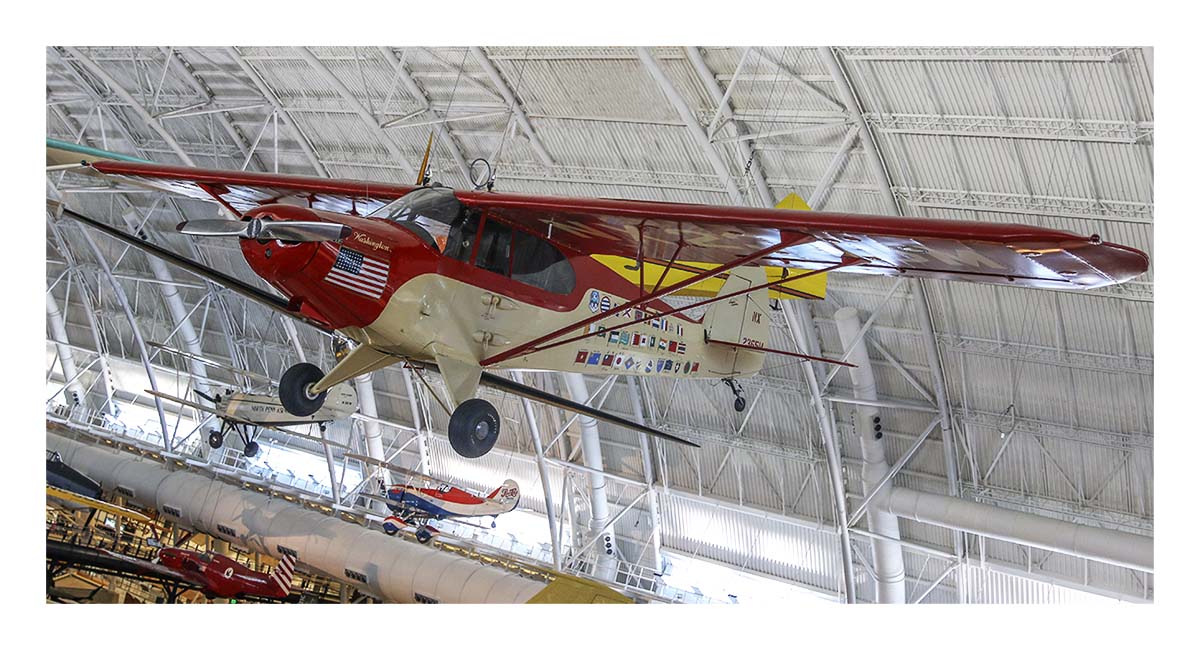
Piper PA-12 Super Cruiser.
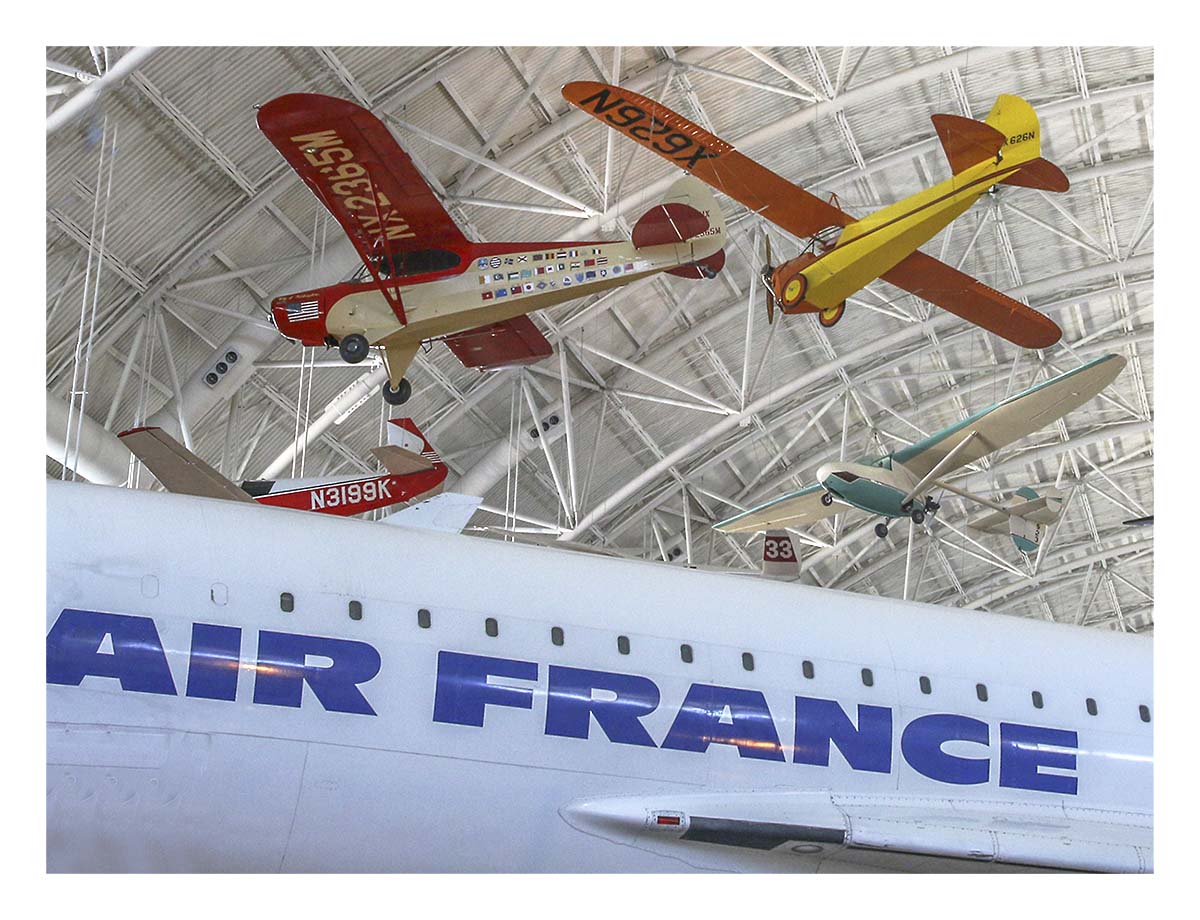
Left to right: A Piper PA-12 Super Cruiser, Aeronca C-2 Collegian NX626N (N626N) 1 and Bowlus/Nelson BB-1 Dragonfly flies above the Air France Concorde
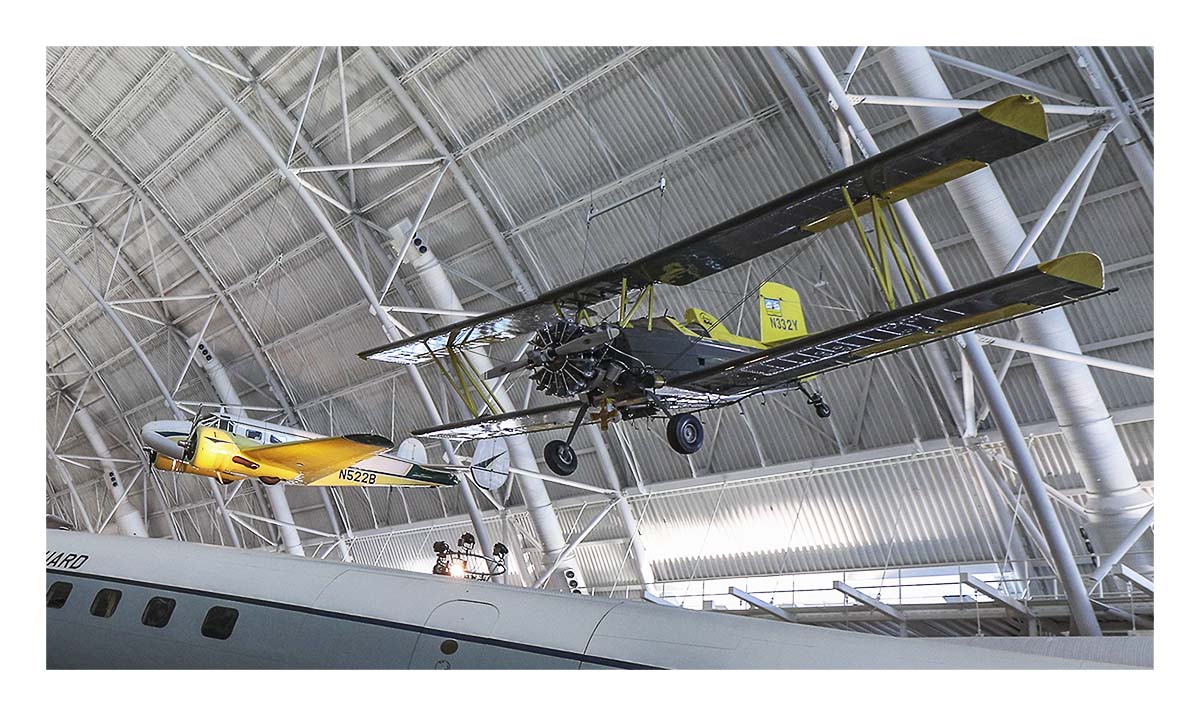
A Grumman G-164A Super Ag-Cat is seen in the foreground, while a Beechcraft D18S is in the background. Noteworthy, the Ag-Cat was the first aircraft specifically designed by a major aircraft company for agricultural aviation and aerial application of chemicals, fertilizers and seeds.
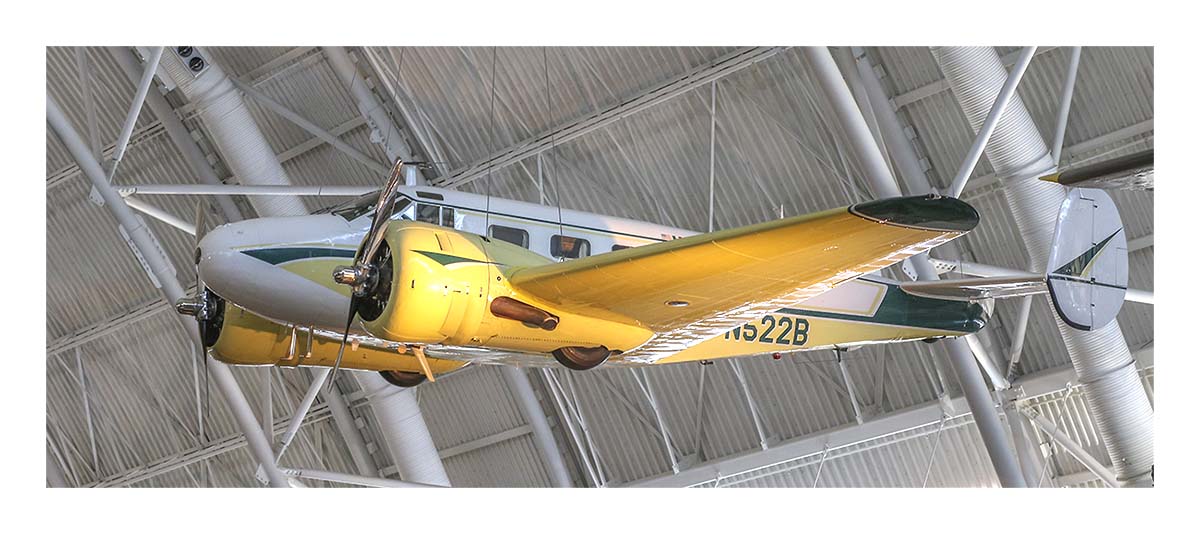
Beechcraft D18S
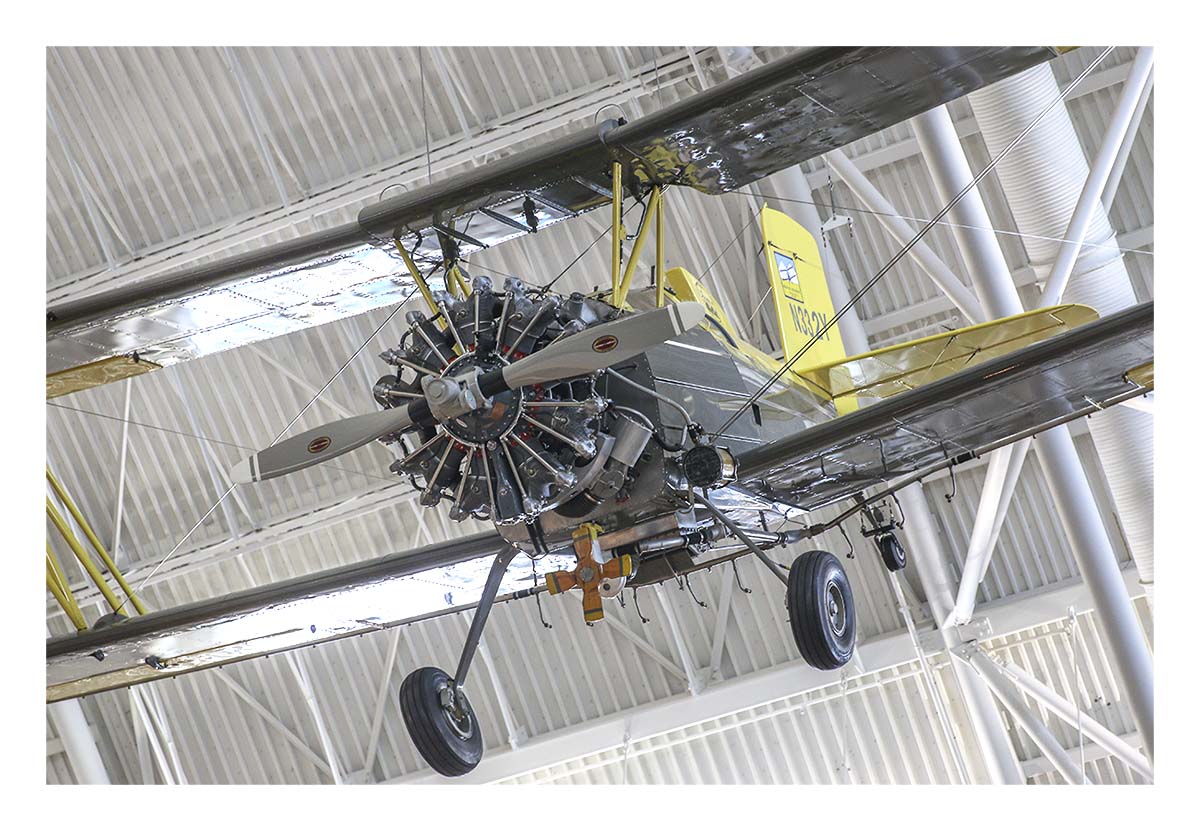
Grumman G-164A Super Ag-Cat.
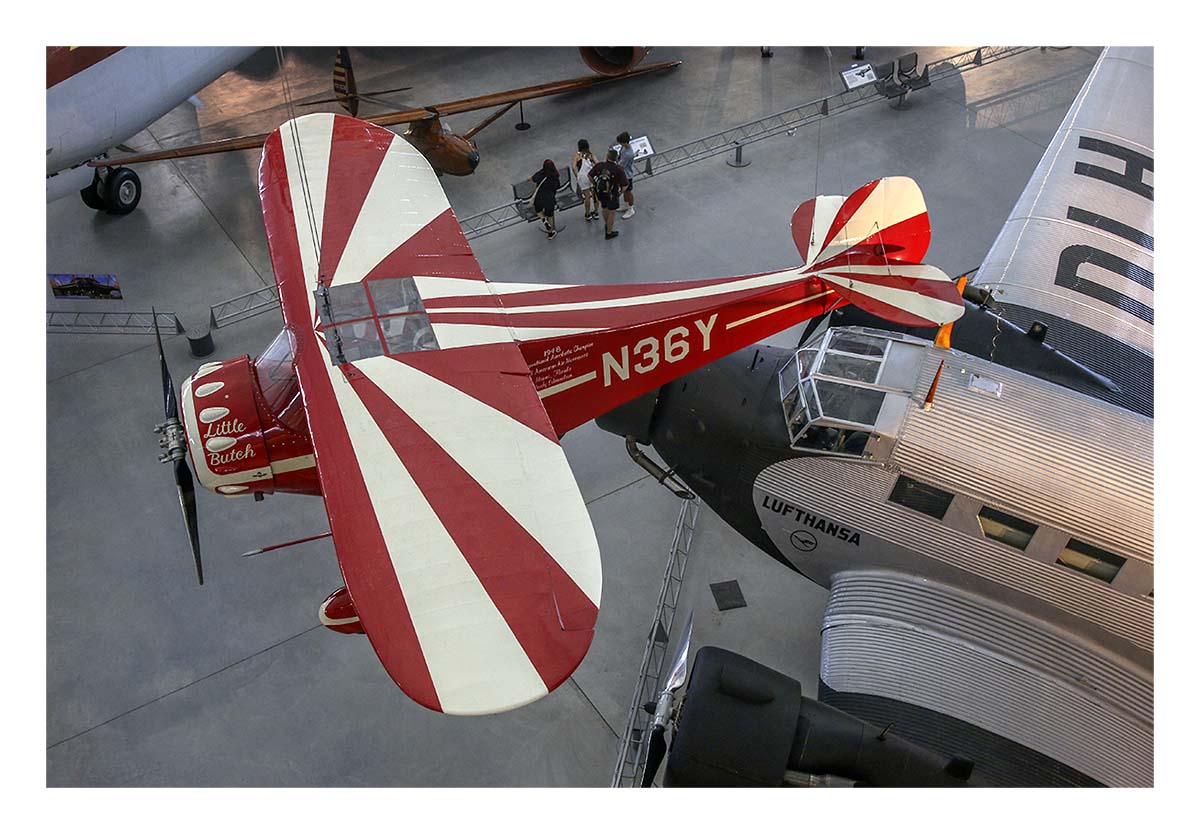
Monocoupe 110 Special: A racing and sporting aircraft of the 1930s and 1940s figuratively "flying" over the Junker Ju 52/3M.
JUNKER Ju 52
Nicknamed Tante Ju or Auntie Ju," the Junkers Ju 52 was not only a successful airliner, but also saw combat in World War II as a transport. The one resting at the museum is a Spanish-built CASA 352-L, while the following images of the documentation and actually ticket given to my wife and I was from our flight in the 80s on Ju 52 christened the "Berlin-Tempelhof." The Berlin-Tempelhof airport occupies an important part of German and Lufthansa history.
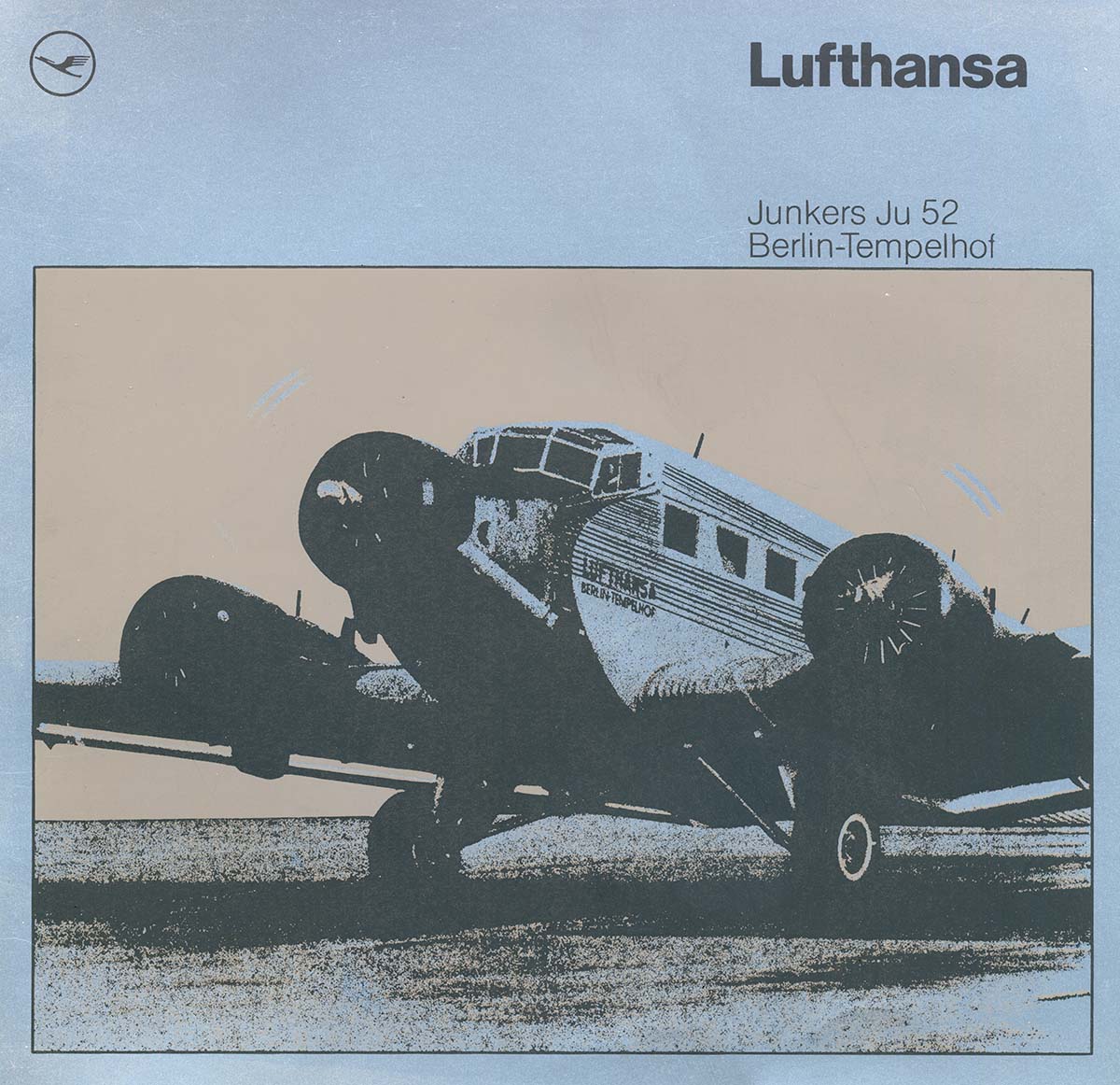
Brochure given to all Ju 52 "Berlin-Tempelhof" passengers
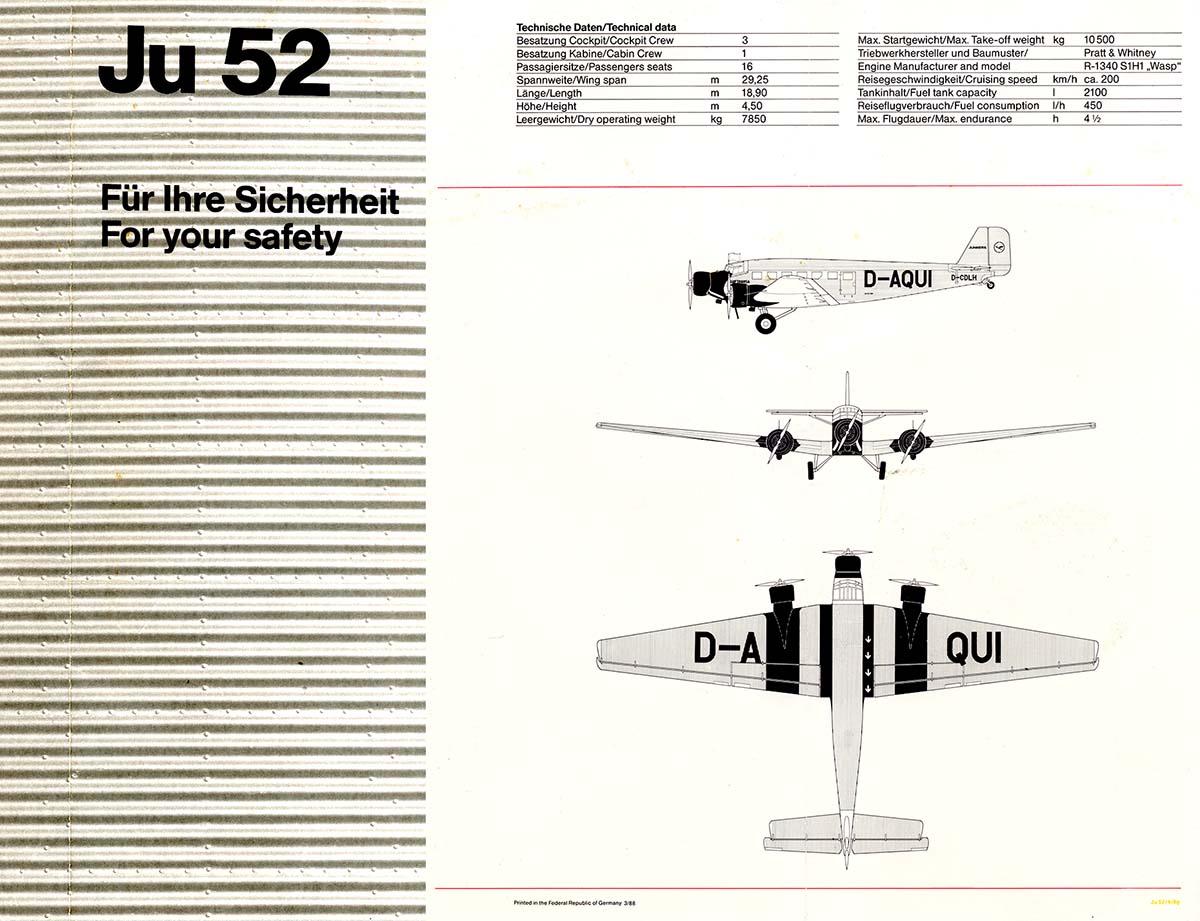
Just like any airliner, this is the front and rear cover of the airline's safety evacuation card.
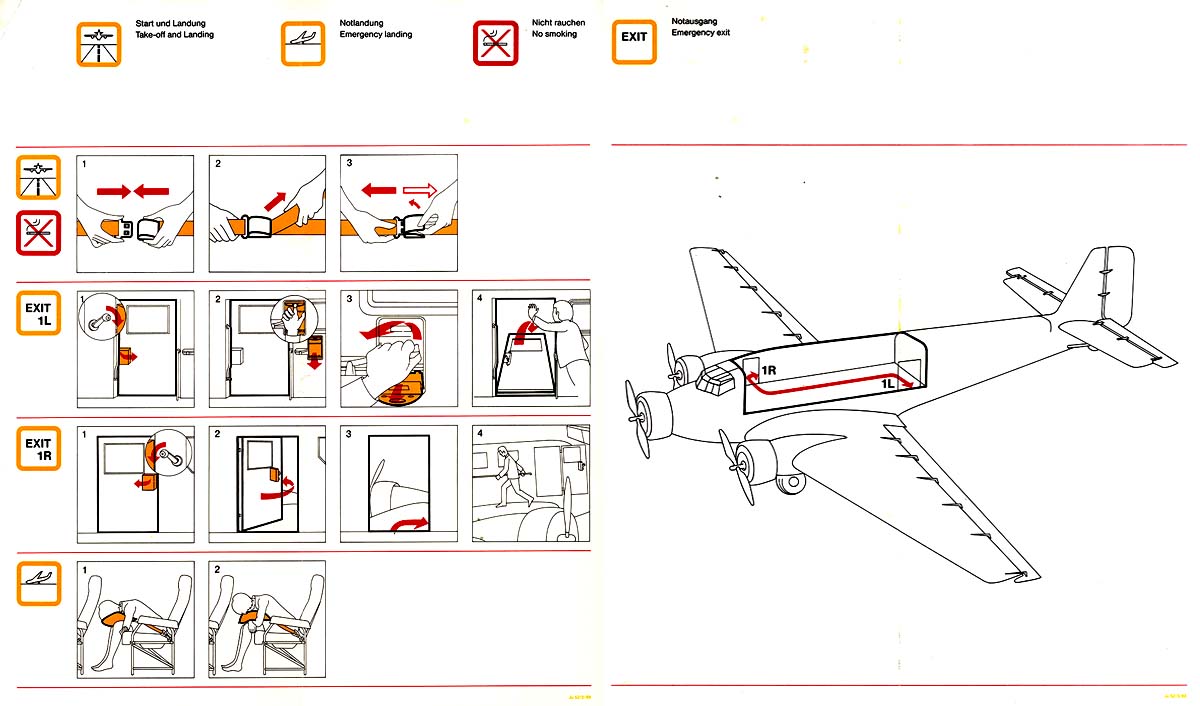
Inside the safety evacuation card.
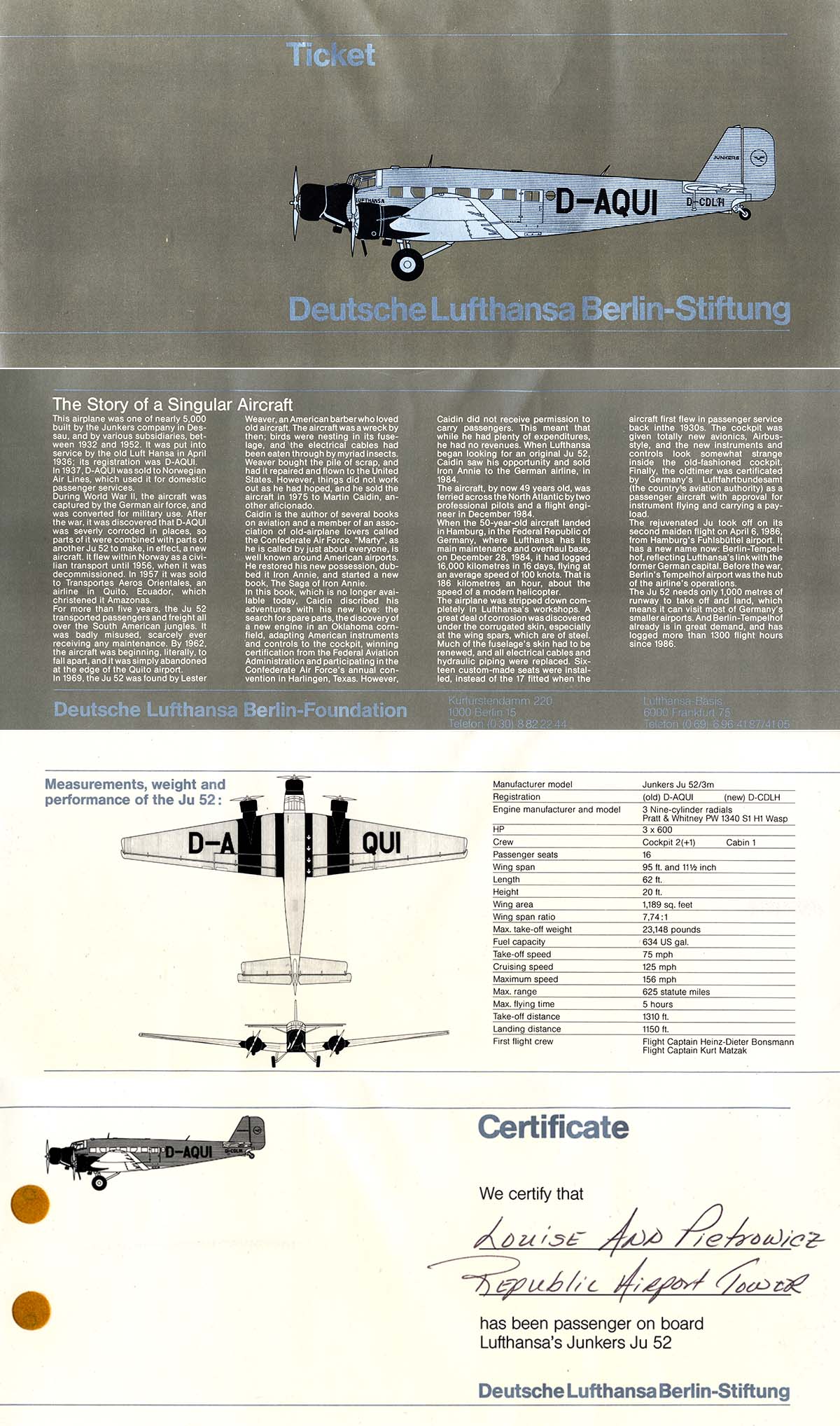
Actual Ticket given to my wife upond boarding. No Passport or TSA PreCheck required.
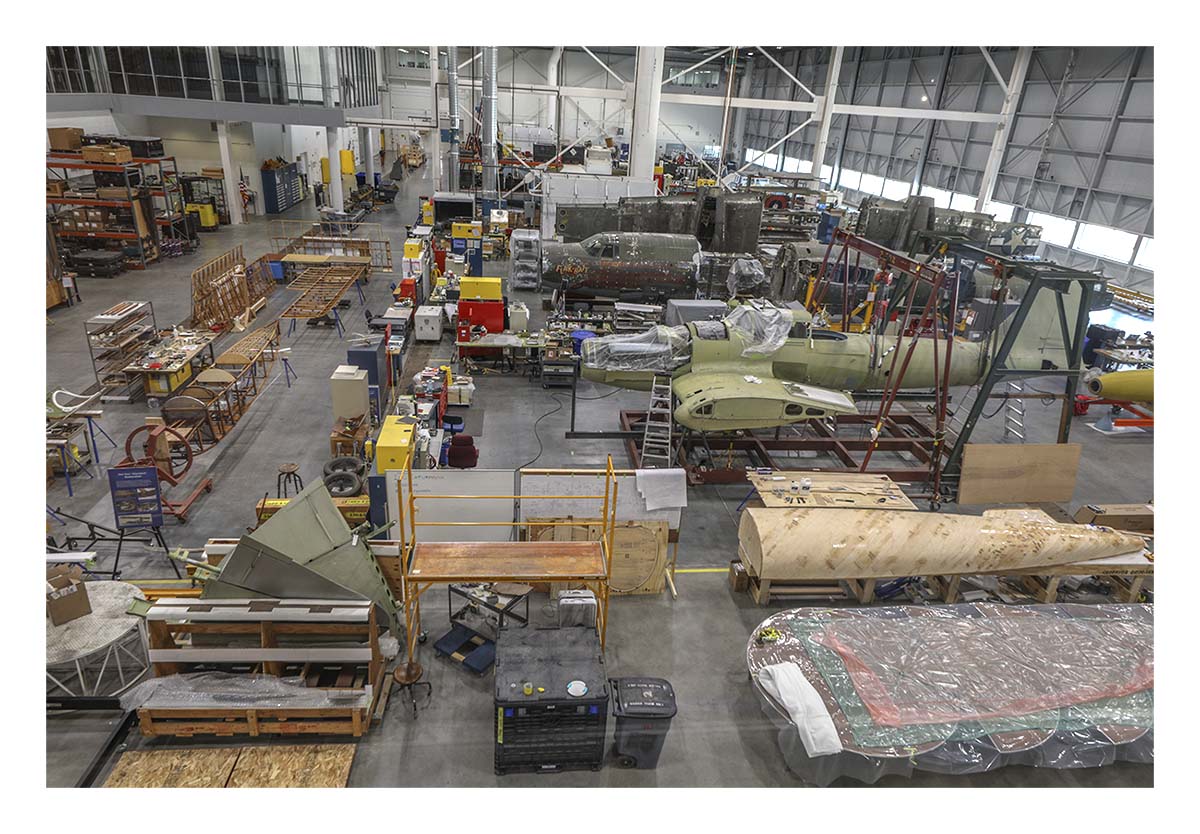
Martin B-26B Marauder "Flak Bait," (serial #41-31773) being restored in the museum's restoration shop. The "Flak Bait" is the survivor of 206 operational missions over Europe, more than any other American aircraft during World War II.
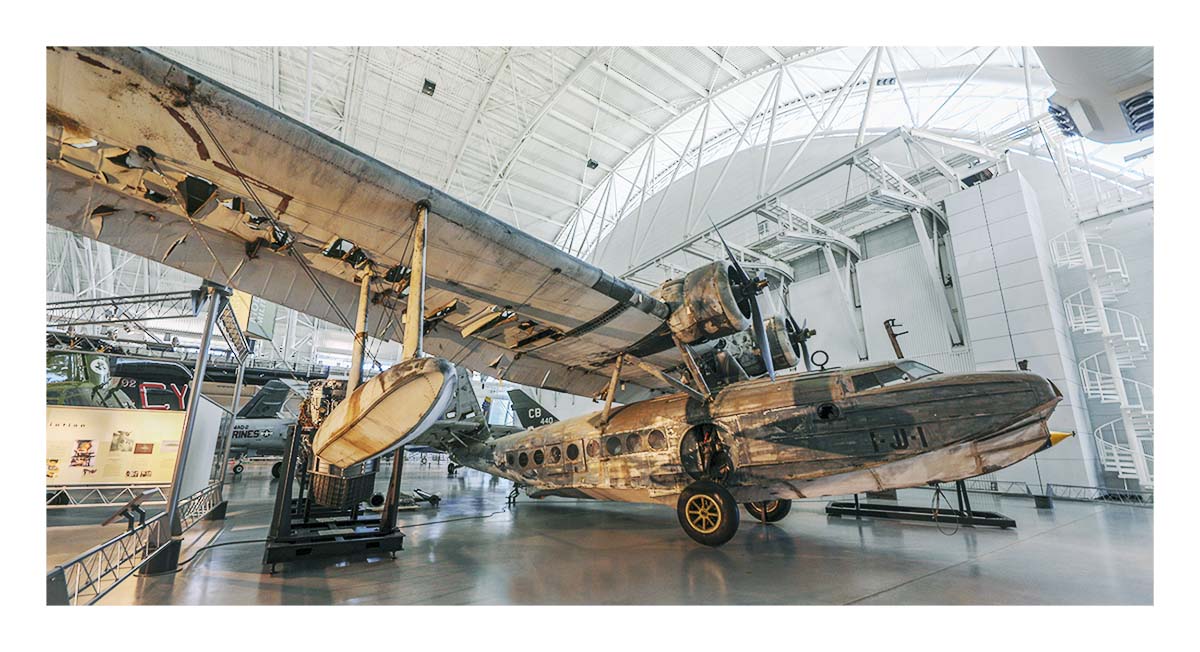
Sikorsky JRS-1. This unarmed utility seaplane represents the only aircraft in the Museum that was at Pearl Harbor, Hawaii, on December 7, 1941. Ten JRS-1s were at the U.S. naval base when the Japanese attacked.
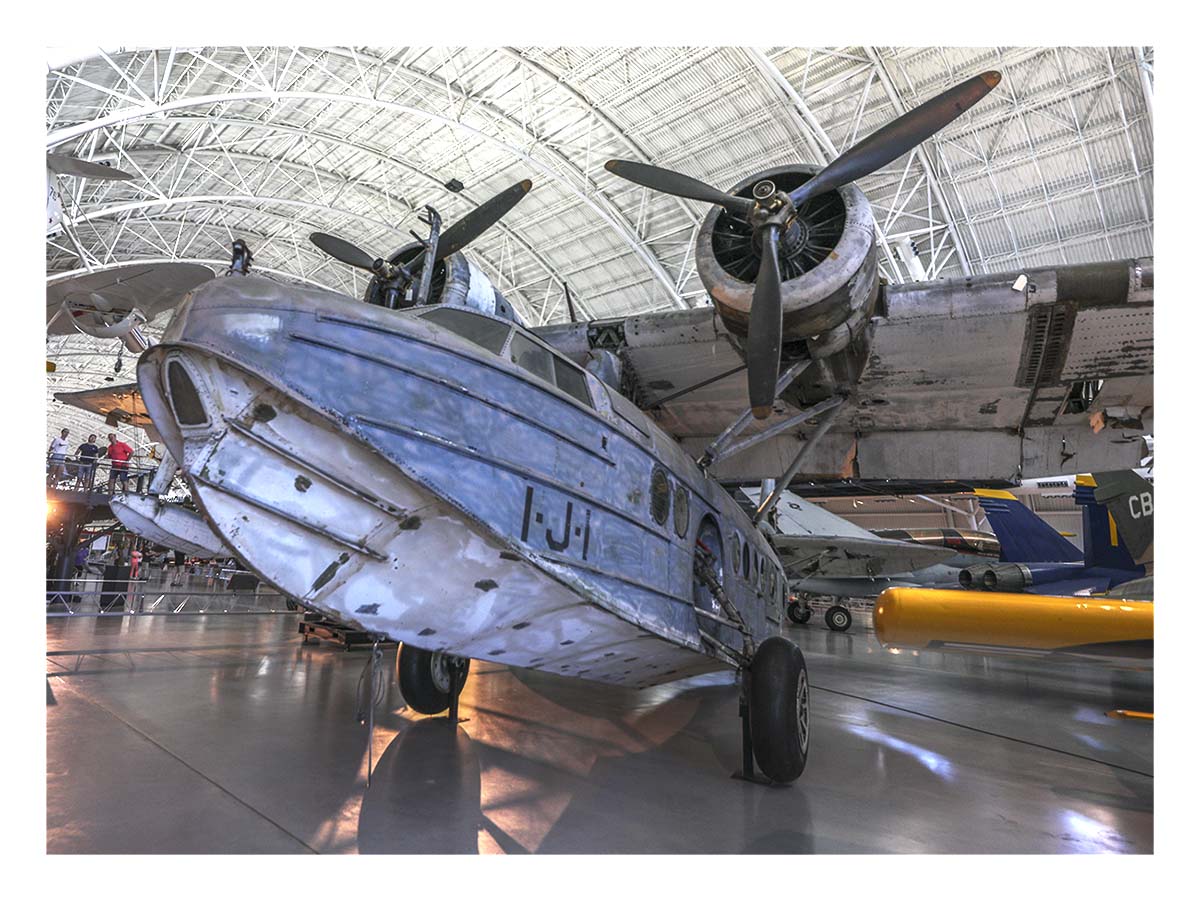
Sikorsky JRS-1. This unarmed utility seaplane represents the only aircraft in the Museum that was at Pearl Harbor, Hawaii, on December 7, 1941. Ten JRS-1s were at the U.S. naval base when the Japanese attacked.
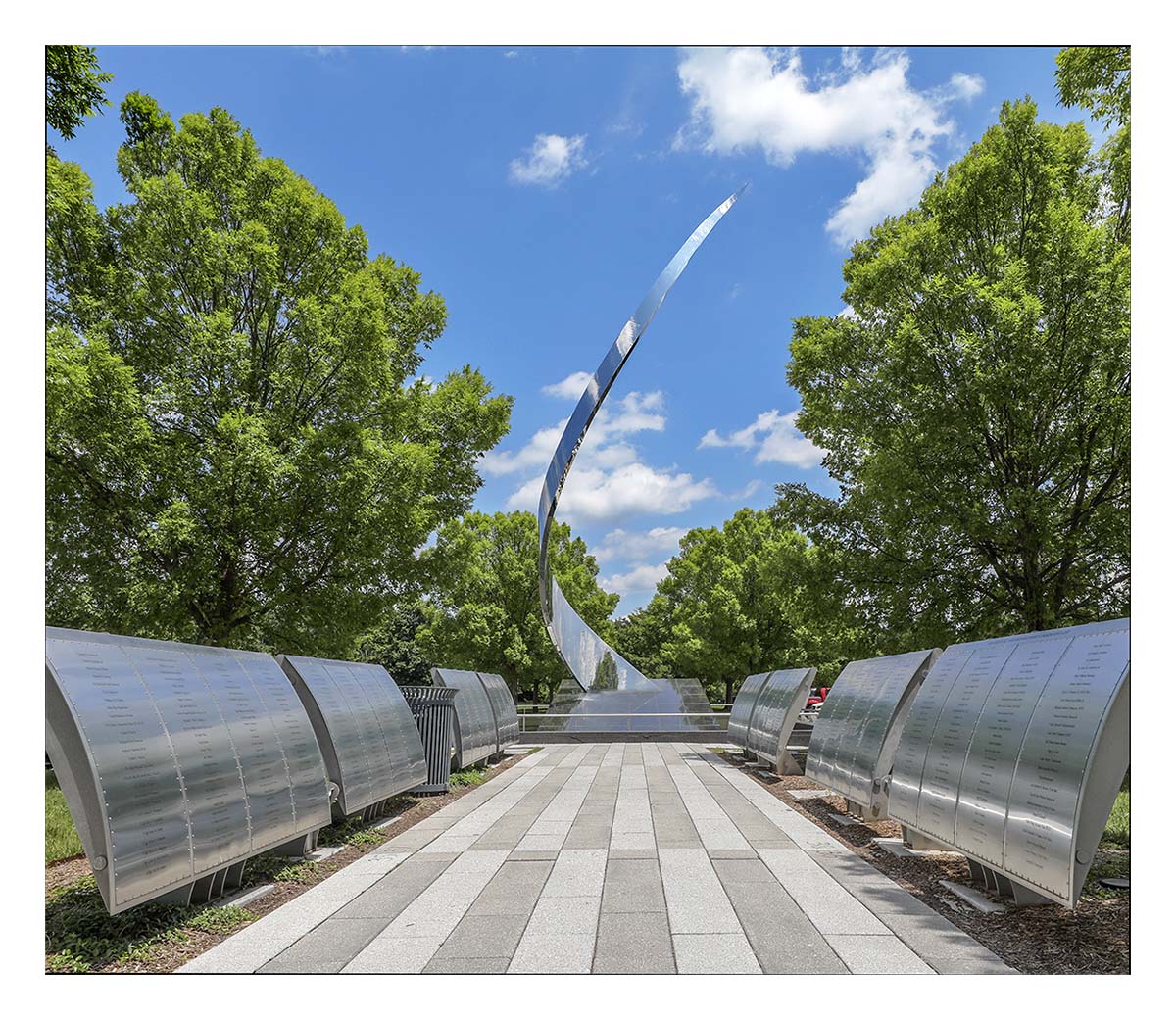
The National Air and Space Museum's Wall of Honor along the tree-lined walkway which leads directly into the Steven F. Udvar Center.
for more NATIONAL AIR & SPACE MUSEUM (SMITHSONIAN) information
CLICK HERE
CLICK HERE